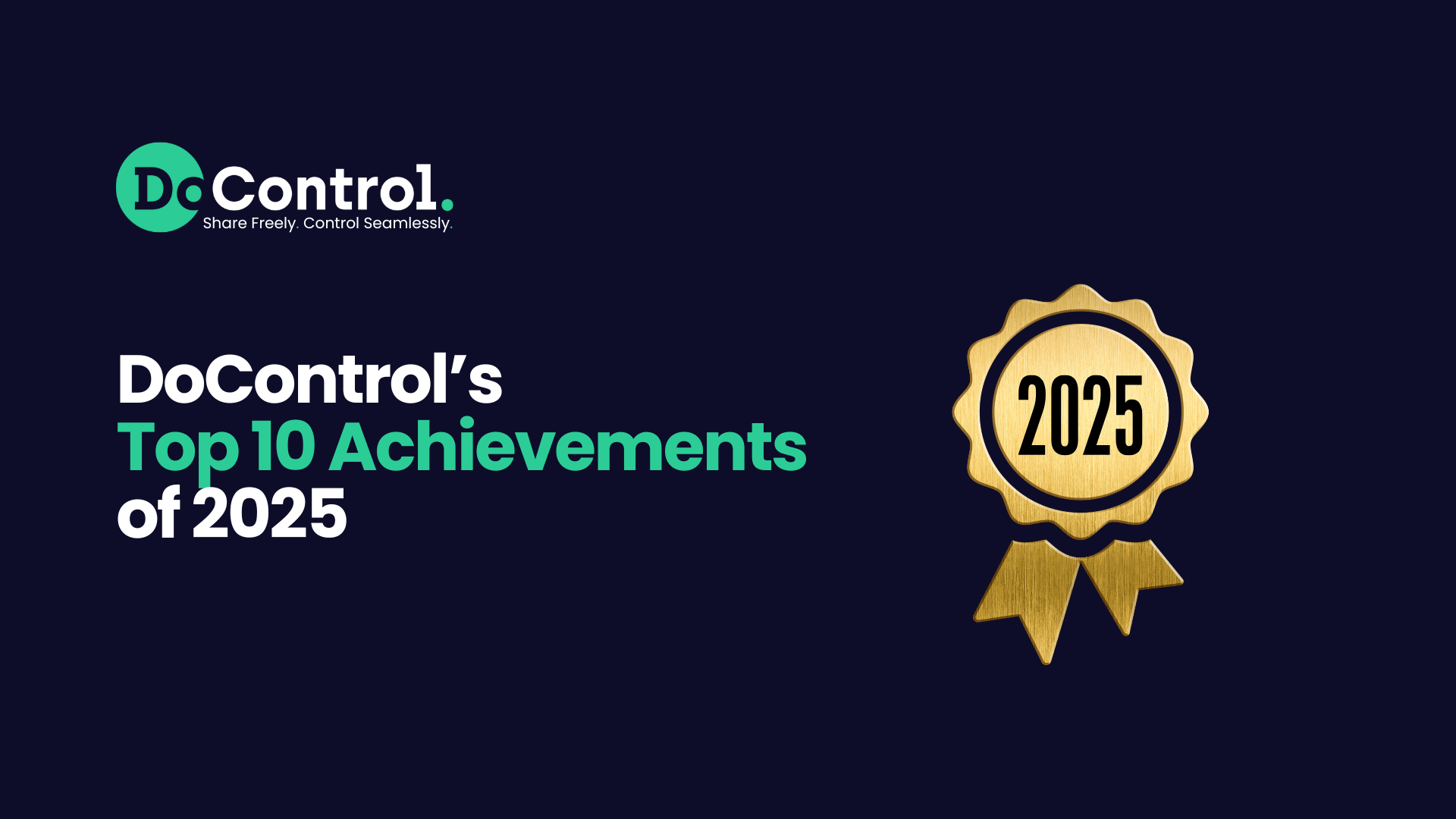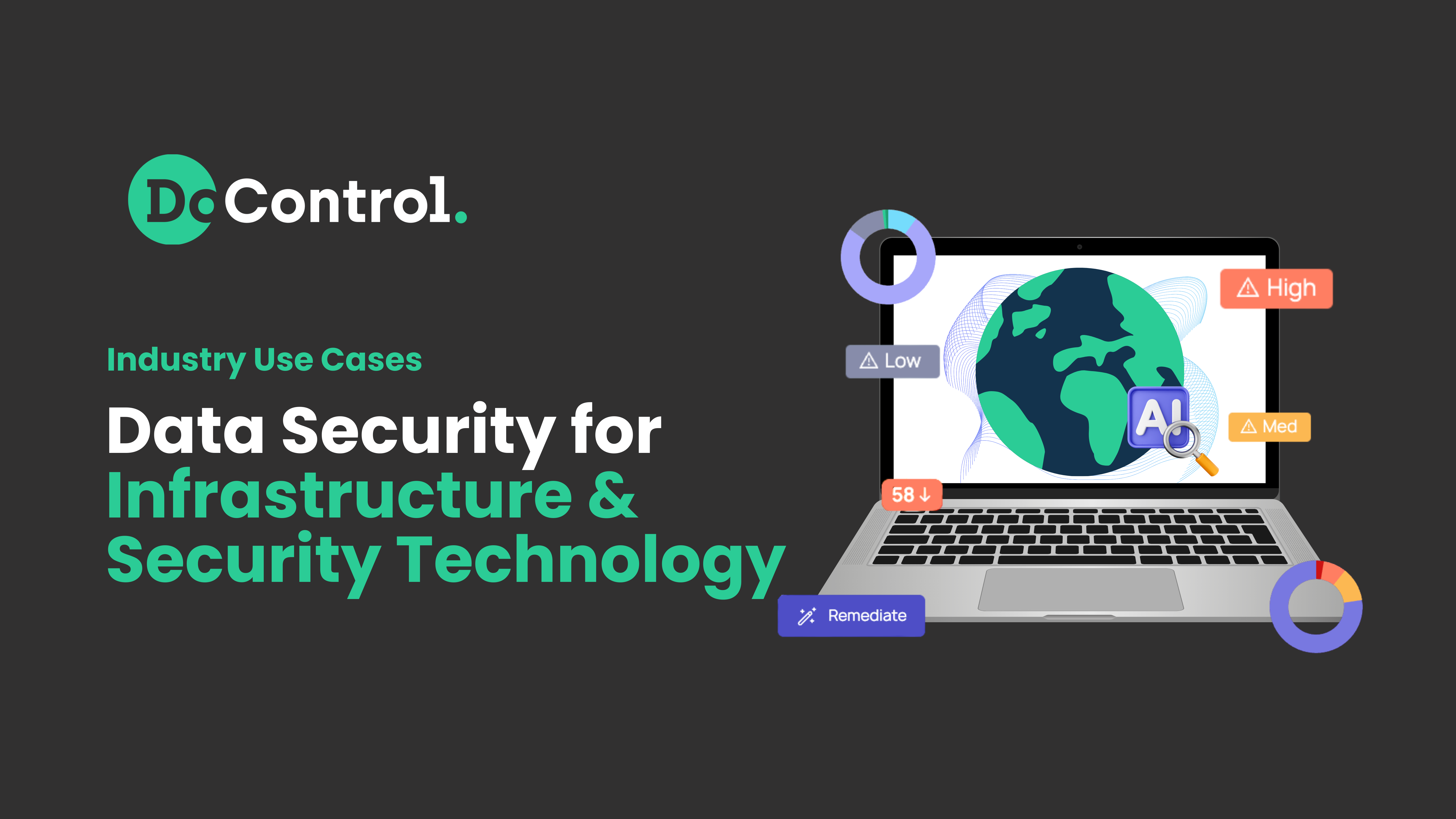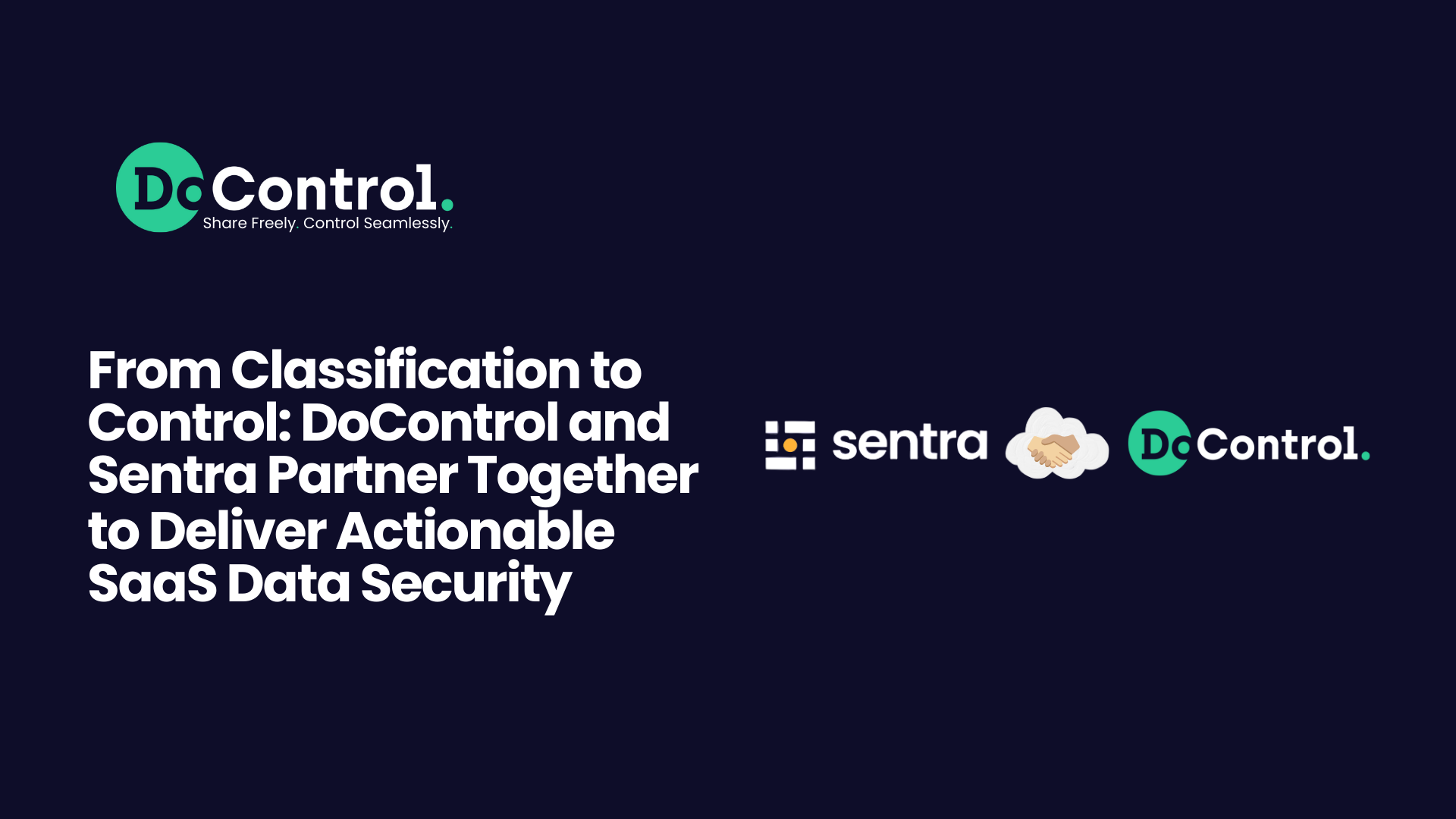.png)
Generative AI is now embedded in core SaaS ecosystems such as:
- Google Workspace Gemini
- Microsoft 365 Copilot
- Slack GPT, Notion AI, and other LLM add‑ons
…and more.
While these tools accelerate productivity and keep organizations innovative with the newest tech, they also create invisible data exposure pathways and expand the attack surface in sneaky ways.
Security teams need visibility and control to prevent sensitive data from leaving the organization – and it starts with governing these generative AI systems properly and effectively.
In this piece, we’ll dive into how genAI is reshaping SaaS security, the biggest risks security leaders face, share best practices for safe AI adoption, and show how DoControl helps organizations gain the visibility, detection, and remediation capabilities needed to keep sensitive SaaS data secure in the age of AI.
How Does Generative AI Accelerate SaaS Data Exposure?
Generative AI is no longer just a standalone tool, it’s embedded directly into the SaaS applications your employees use every day.
Tools like Gemini, Microsoft 365 Copilot, and Slack GPT can automatically summarize messages/emails, generate content, and analyze files using data from your SaaS environment.
While these capabilities are powerful, they introduce new SaaS data exposure risks that traditional security measures struggle to catch:
1. Employee Prompts and Shadow AI
Employees often copy content from Google Drive, SharePoint, Slack etc. into generative AI prompts to get help drafting documents or creating content. This behavior is often unsanctioned, creating “shadow AI” usage that:
- Bypasses traditional SaaS security policies
- Exposes sensitive files like contracts, financial statements, and source code to external AI models
2. LLMs in Gemini and Copilot Create Invisible Data Flows
When employees use Gemini or Copilot within their respective workspaces, these LLMs often ingest and process corporate data stored in SaaS to generate the outputs. For example:
- Gemini can suggest responses using other content from Docs, Gmail, and Sheets
- Copilot can summarize internal Teams chats and SharePoint files
The risks of this?
- Cross‑app data exposure – sensitive info stored in various Google Drive files or internal docs may appear in unexpected contexts, or be shown to users who aren’t shared on the original files that data is coming from
- Limited auditability – LLM queries and outputs within these tools are often not fully logged for compliance and are still iterative when it comes to security
- IP and compliance risks – critical data such as PII, PHI, PCI data, and IP could potentially be leveraged by these LLMs, and may leave the environment
3. Over‑Privileged and Abandoned SaaS Apps
Many generative AI tools request broad OAuth access – from reading all files in Google Drive to sending messages on Slack. Over time, these apps can become:
- Over‑privileged → holding more access than they truly need
- Abandoned → no longer in use but still connected to your SaaS environment
- Exfiltration risks → especially if compromised or malicious
Shadow AI is becoming a new attack surface altogether. Hackers and malicious actors are increasingly targeting weaknesses in these new, third‑party apps – using them as entry points to steal data, compromise credentials, and infiltrate critical environments!
4. Compliance & Sensitive Data Handling
Generative AI usage introduces significant regulatory and compliance challenges for organizations managing sensitive data in SaaS applications.
When employees input sensitive data into in-workspaceLLMs like Gemini or Copilot, organizations may unknowingly violate:
- GDPR (personally identifiable information / PII)
- HIPAA (protected health information / PHI)
- PCI DSS (credit card data / PCI)
5. Audit & Reporting Gaps in LLM‑Driven SaaS
Traditional SaaS audit trails don’t track LLM queries and outputs, making it difficult to:
- Know which employees exposed which data to AI tools
- Trace incidents for compliance reporting or forensics
- Demonstrate adherence to internal AI usage policies
With LLM adoption accelerating in SaaS ecosystems, compliance teams must pair visibility with automated enforcement to stay ahead of AI‑driven data risks.
5. Direct Workspace-to-LLM Integrations
Some generative AI platforms like ChatGPT Enterprise or Claude now allow you to directly connect Google Workspace (Drive, Gmail, Calendar, etc.) or bulk-upload files into projects for ongoing analysis. This means the LLM can continuously index and reference that data when generating outputs.
The risks of this?
- Mass ingestion risk – large volumes of sensitive corporate data (across multiple departments) can be pulled into a single AI workspace in one action, creating a massive potential blast radius if misconfigured or compromised
- Persistent exposure – once uploaded, files or their derived insights may persist in the AI project indefinitely, even after the originals are deleted from Google Workspace
- Opaque processing – limited visibility into exactly what data the LLM has indexed, how it’s being used in future prompts, and whether it leaves your corporate boundary
Again, these kinds of AI misuses are still emerging and evolving, but the potential risks are already significant.
How DoControl Helps Organizations Tackle Shadow AI Risk in SaaS
While security teams can’t always control what employees paste into ChatGPT or type into Copilot, they can monitor these apps best they can, and control which other third-party GenAI apps gain access to SaaS environments.
DoControl’s expanded Shadow Apps module gives organizations the power to monitor, assess, and remediate GenAI integrations at scale, before sensitive data is exposed.
Here’s how DoControl helps mitigate the most urgent GenAI risks in SaaS:
Detect and Monitor GenAI Shadow Apps Across the Organization
As generative AI tools explode in popularity, so does their unauthorized use within the SaaS stack. Employees are connecting tools often without security’s knowledge.
DoControl automatically:
- Identifies which GenAI apps are connected to your SaaS platforms
- Maps who installed them, when they were added, and from which ecosystem (ex: Google Workspace, Microsoft 365)
- Categorizes them and distinguishes if they’re allowed vs. not allowed
Reveal OAuth Scopes and Risky Access Permissions
Many generative AI apps request excessive OAuth scopes – from full access to Google Drive or Outlook to unrestricted Gmail read/write access.
DoControl shows:
- Exactly what data and systems each app can access
- How broad or risky those permissions are
- Usage patterns and activity logs to identify suspicious or excessive access
Receive Tailored Risk Recommendations You Can Act On
Not all AI tools are inherently risky, but some are. DoControl uses aggregated context on users derived from HRIS, IdP, and EDR, along with evaluating app behavior, scopes, and usage to deliver contextualized, risk-based recommendations, including:
- Which apps should be reviewed, removed, or restricted
- Which users or teams are connecting high-risk apps
- How permissions compare to other tools in your environment
This helps your security team prioritize where to focus instead of being overwhelmed by app sprawl, alert fatigue, and senseless noise.
Remediate Risky Apps in Minutes, Not Months
Unlike traditional SSPMs, DoControl goes beyond detection. You can:
- Bulk remove access to GenAI apps across all users or selected groups
- Restrict installation of apps based on a number of factors
- Automate workflows that prevent unauthorized apps from being installed in the future
Prevent Future GenAI App Risk with Automation
Shadow AI isn’t a one-time cleanup, it’s a recurring governance problem. DoControl helps you:
- Continuously monitor for new GenAI integrations
- Apply automated policy enforcement for app approvals and removals
- Create playbooks that match your risk tolerance and compliance goals
5 Best Practices for Securing SaaS in the Age of Generative AI
We realize that not every organization is ready to tackle generative AI and shadow AI on a macro level. Regardless, AI is reshaping how employees interact with SaaS data and applications, and security leaders must take a proactive approach to keep data safe.
Beyond deploying the right tools, success depends on establishing clear policies, education, and consistent enforcement. Here’s a five‑step best practices checklist to secure your organization and educate your teams on safe AI usage:
1. Establish a Clear Generative AI Usage Policy
- Define which AI tools are approved for business use (Gemini, Copilot, ChatGPT, etc.)
- Clarify what types of data can and cannot be shared with LLMs
- Require employees to follow corporate guidelines to avoid PII, PHI, or confidential IP exposure
2. Monitor and Audit SaaS Data Flows
- Inventory all SaaS apps and their AI or OAuth integrations to reveal hidden data flows
- Enable centralized logging of file sharing, app access, and data movement
- Conduct quarterly audits to identify shadow AI or abandoned apps
3. Educate Employees on Responsible AI Usage
- Train employees to avoid pasting sensitive data into AI tools
- Provide real‑world examples of data exposure incidents to drive awareness
- Offer self‑remediation workflows so users can correct risky sharing without friction
4. Automate Detection and Remediation Where Possible
- Manual data cleanup is slow; automated SaaS workflows reduce risk exposure windows
- Use tools that can flag and remediate external sharing, revoke OAuth access, and enforce policy in real time
- Aim for low‑friction workflows that balance security and productivity
5. Regularly Review and Update AI Security Posture
- Generative AI evolves quickly! Quarterly reviews keep policies relevant
- Update SaaS configurations to block or limit risky AI app permissions
- Use risk dashboards and scoring to prioritize action where it matters most
By following these five best practices, security leaders can reduce the likelihood of AI‑driven data leaks while maintaining employee productivity. When paired with a platform like DoControl for visibility, automated remediation, and end-user engagement, organizations can turn AI security from reactive to proactive.
Summary
As generative AI and shadow AI adoption accelerates, security leaders must ensure that innovation doesn’t come at the cost of data protection. DoControl helps you stay ahead of AI‑driven SaaS risks, without slowing your business down.
Want to Learn More?
- Get a breakdown of Gemini for Google Workspace Security
- Discover The Impact of GenAI on SaaS Security
- Learn How to Detect and Secure Shadow AI Tools in SaaS Environments
- Get a FREE Google Workspace Risk Assessment to see your SaaS data exposure



